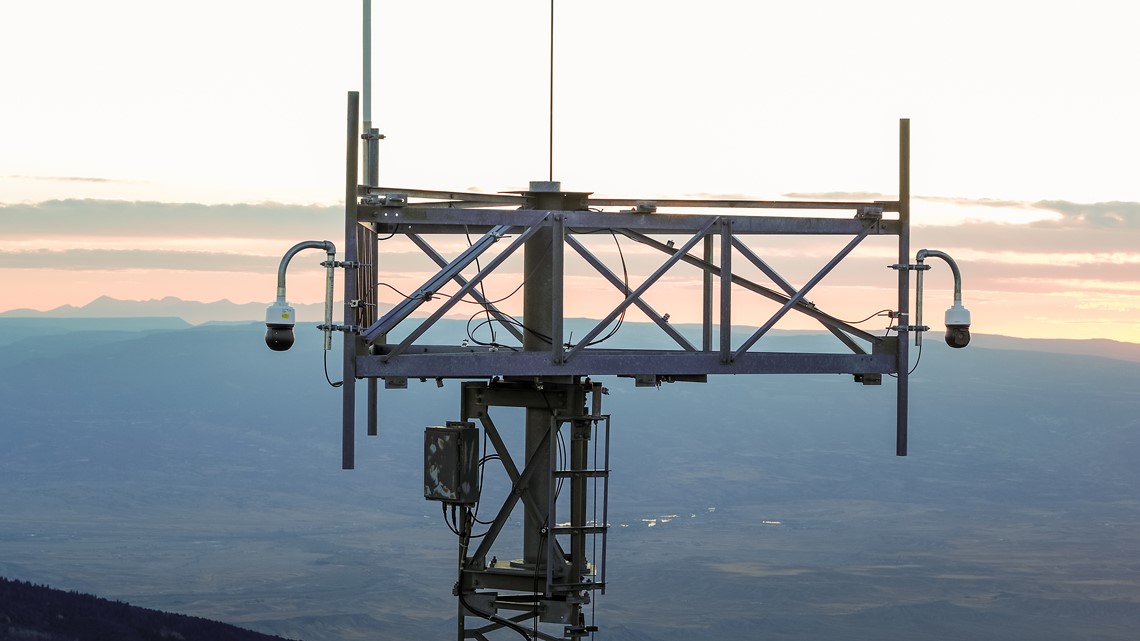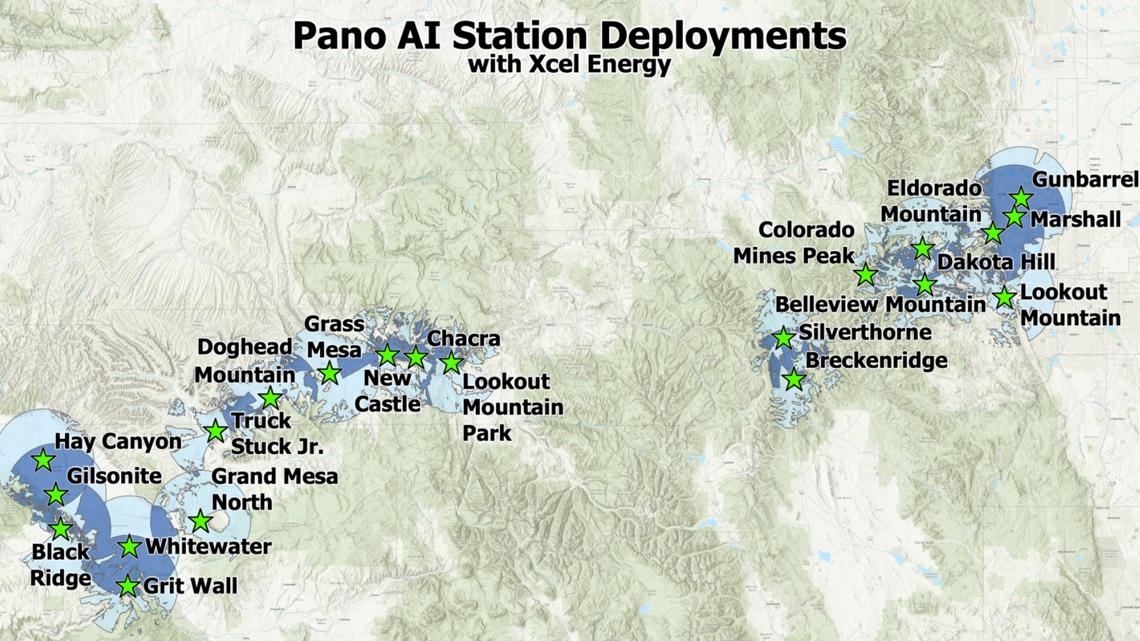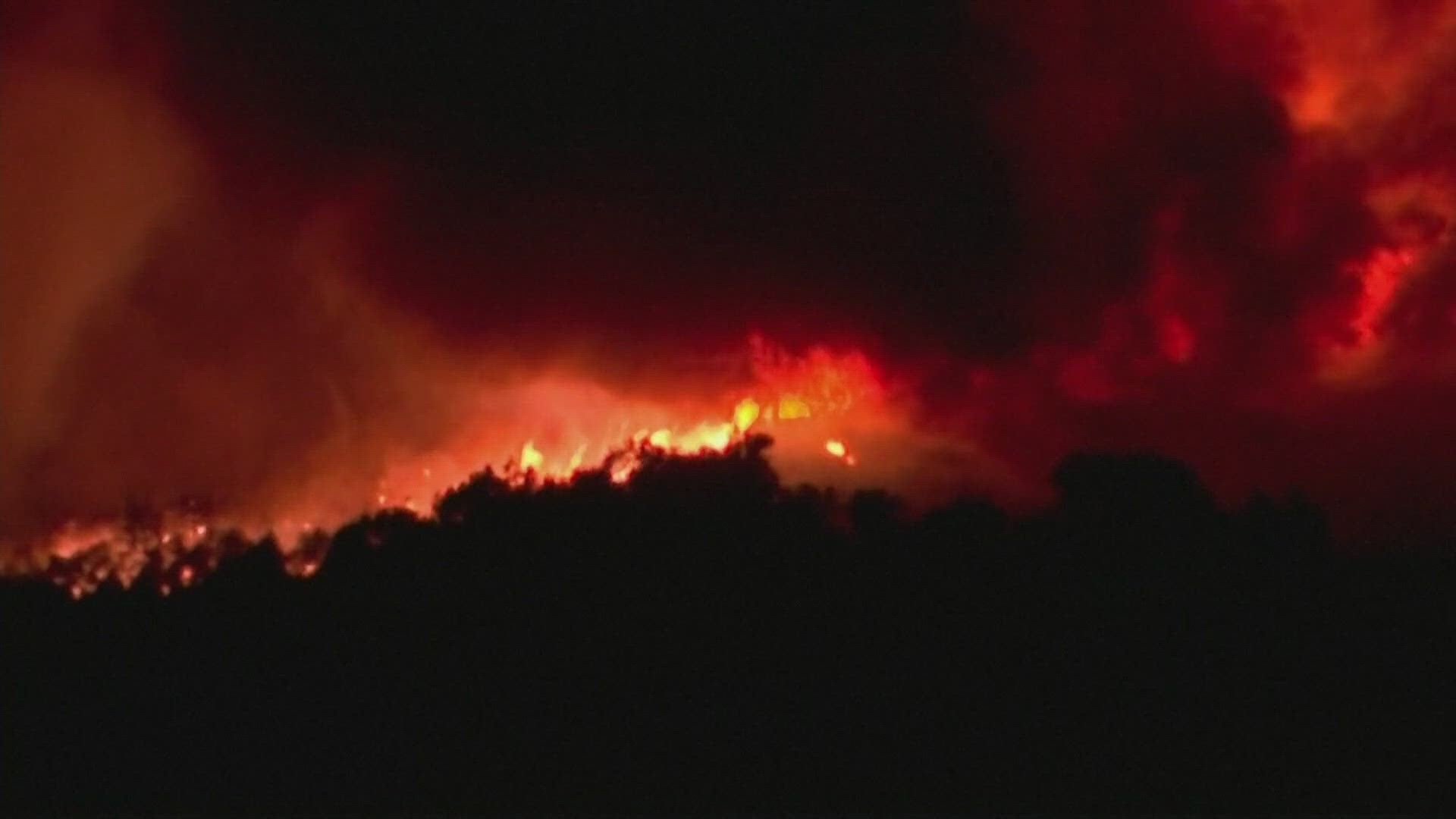COLORADO, USA — Colorado’s largest utility company is expanding its partnership with a wildfire detection company.
California-based Pano AI operates dozens of cameras around the state of Colorado, using artificial intelligence to scan the skies for signs of smoke or fire. Xcel Energy has already been working with the company in Boulder, and announced an expansion to that partnership this week.
“The goal is to really protect the communities that Xcel serves as part of that region, but also give the early visibility to make sure infrastructure and the grid can be protected, and give first responders visibility to incidents that may start in remote areas,” explained Arvind Satyam, co-founder and chief commercial officer for Pano AI.
"Utility companies are an important part of the equation," he said.
"As we think about fire risk, it's impacting communities. It's impacting many different stakeholders. Utilities are one part of it."
Through Xcel, Pano AI plans to install another 21 cameras systems across the state by the end of the year, bringing the company’s total number of monitoring locations in Colorado to 40. Pano’s cameras rotate 360 degrees and connect the artificial intelligence to first responders, dispatchers, and cooperating agencies.


The company sees an added benefit in remote, mountainous regions, where it can be hard to locate the source of a fire or respond quickly. Several communities have already partnered with the company, like Aspen, Telluride, and other high country jurisdictions.
“We have as one of our top priorities the safety of our customers, our communities, and our coworkers,” said Robert Kenney, president of Xcel Energy – Colorado. “When we saw the opportunity to deploy new technology that would help enhance our ability to protect public safety, we embraced that. The incentive for us is to partner with a tech partner who's deploying an exciting new technology that will allow for early detection and rapid response to wildfires before they spread.”
Xcel shared this map of 21 camera locations to be installed by the end of this year, from the Front Range to the Western Slope.


Utility infrastructure is both at risk of fire damage and, sometimes, the cause of it.
PG&E in California is paying millions of dollars in settlements after wildfires in that state. And Xcel is facing a lawsuit in Colorado over claims the utility company's equipment caused part of the Marshall Fire. Xcel has disagreed with those allegations.
Along with AI cameras, Xcel said there are other wildfire prevention efforts underway.
“From my perspective, it’s a recognition that the problem is broader than utilities. We’re seeing wildfires more intensely, more frequently, more destructive – and it's primarily driven by climate change and effects of climate change,” Kenney said.
“We recognize that the solutions are many. The deployment of these cameras is one tool in the toolbox. We also focus on vegetation management, inspecting our equipment, strengthening and hardening our equipment. It's one tool in the box, but also recognition that solving the problem is going to require an all hands on deck approach.”
Pano AI has been launching various pilot projects around Colorado for about two years already. Kenney said Xcel Energy has entered into a five-year contract with the AI company.
SUGGESTED VIDEOS: Latest from 9NEWS

